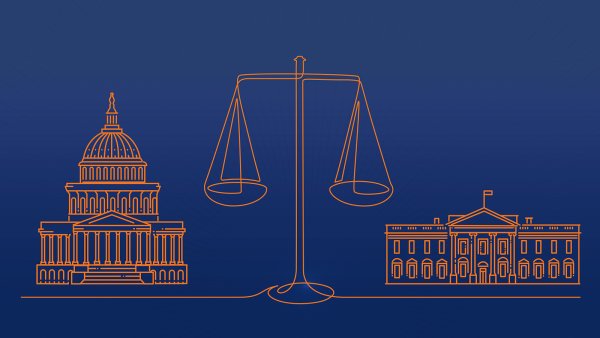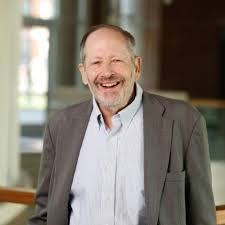
Ratified more than 200 years ago, the U.S. Constitution established a balance of powers to prevent any single branch of government from gaining too much control: Congress would pass laws, appropriate funds, and provide executive branch oversight; the president would serve as commander in chief of the military and could veto laws, in addition to appointing judges and entering into treaties with the advice and consent of the Senate.
This relationship between Congress and the presidency has generated tension throughout U.S. history. We sat down with Sidney Milkis, White Burkett Miller Professor of Politics at the Miller Center and UVA's department of politics, to explore the history and causes of the ever-expanding power of the presidency—and how it affects American democracy.

Q: How have the institutions of the presidency and the Congress evolved?
Milkis: Before the 20th century, and particularly prior to the 1930s, executive orders—acting without the authorization of Congress—were rare and primarily limited to emergencies.
After the New Deal, the government became large and complex, heavily involved in domestic and foreign policy. That made it much more difficult for Congress to be the first branch of government, as the Constitution sets up in Article 1. The development of a large, complex society in some ways naturally led to more deference to the presidency.
But Congress maintains its power in two important ways: One is setting up an elaborate committee system to oversee the actions of the executive branch. And the other, probably the most important, is the power of the purse.
The architects of the Constitution believed that the division and separation of powers would depend upon members of government being loyal to their institution and protecting it from incursions from the other branches.
And I think Congress maintained that loyalty until the 1960s, when the process became much more partisan. Cultural battles fed polarization over things like race, gender, and the Vietnam war. Partisan differences became more important than institutional loyalties. And members of Congress became more willing to support presidential actions that advanced their party's objectives.
Partisan differences became more important than institutional loyalties.
Q: So where does that leave us now?
Milkis: Republicans have been enthusiastic about President Trump taking unilateral action [more than 45 executive orders in the first two weeks of his administration] to pursue Republican objectives. In the last administration, Democrats in the Congressional Progressive Caucus, although less willing to push for executive unilateralism, pushed President Joe Biden to use an executive order to forgive student debt. Both parties have been complicit in pushing the boundaries of the president's authority.
For the Congress, it has been hard to act because it is ensnared in bipartisan gridlock. Part of this paralysis is due to the filibuster—a tactic in the Senate where enacting most legislation requires the support of 60 members—a gambit that was once used rarely but now has become routine.
The Trump administration’s flurry of executive actions—many of which have pushed the outer boundaries of, or directly derogated, the law (most notably the decree to end the 14th Amendment’s guarantee of birthplace citizenship)—is particularly notable because his party has a majority in both chambers of Congress. President Trump’s deployment of unilateral action as a first resort differs from the unilateralism of his Democratic and Republican predecessors since the late 1960s, many of whom acted most aggressively when confronted with the frequent occurrence of divided government—with the White House, Senate, and House controlled by different parties. To see a president signing these provocative executive orders when he has majorities in both the House and Senate represents an especially dangerous abrogation of Congress’ constitutional authority.
Q: Your work focuses on the connection between social movements and the presidency. Do you see that relationship as a factor?
Milkis: I do. Part of the polarization we see in the United States is over cultural issues like abortion, immigration, civil rights, LGBTQ+ rights. This grew out of the “movement politics” of the 1960s, which reduced the power of both political parties.
Social activists have gained more direct influence on government, particularly when they have formed an alliance with the presidency. For example, the influence of immigration-rights groups in the Democratic coalition is a large reason why Biden signed several pro-immigration executive orders at the outset of his presidency.
Social activists have gained more direct influence on government, particularly when they have formed an alliance with the presidency.
And Trump has developed a strong relationship with a powerful MAGA movement, made up of social activists dedicated to conservative social causes—traditional values, law and order, and national and homeland security—that are fueling many of the actions the president is now taking.
We are now in a place where the political bases—the parties' most loyal supporters—push the president of their party to cut through the complexity of American government to get things done, even if it means putting partisan loyalties above loyalties to constitutional norms and institutions.
In your book Rivalry and Reform, you write about past presidents and social movements that forged partnerships that profoundly recast American politics. Which ones draw the most relevant parallels to today?
Milkis: The one that most parallels Biden is Lyndon B. Johnson and the civil rights movement, when social activists became a core constituency of the Democratic Party and somewhat marginalized the labor unions and blue-collar workers. The maturing of LBJ’s Great Society carried over into the Obama and Biden administrations, and these social activists became even more central.
The one that parallels most with Trump is Ronald Reagan's enlisting of the Christian Right into the Republican Party. Trump has developed a kind of primordial relationship with these groups—to the point where they see him as a savior. And what fed into that very much was his near assassination in July.
What the presidency and social movements have in common is that they're both disruptive political actors. Social movements want non-incremental change, and ambitious presidents want to be transformative leaders.
What the presidency and social movements have in common is that they're both disruptive political actors. Social movements want non-incremental change, and ambitious presidents want to be transformative leaders.
Q: How does the Congress-presidency balance affect everyday Americans?
Milkis: It affects us all when the president seeks to usurp Congress’ power over the purse. One of the reasons Trump walked back his administration’s freeze on federal funding within days of enacting it was because there was a fear it was going to affect Medicare and Medicaid. Those programs greatly impact people's everyday lives. Trump’s tariffs have been another pretty aggressive challenge to the constitutional order. If they lead to inflation, that too will affect kitchen table issues.
In a constitutional republic like ours, the government is dependent upon and accountable to the consent of the people. That depends on a foundation that is created by the rule of law, which requires that Congress is at least an equal partner with the president.
What’s to protect the weak from the powerful if you don't have a law to protect those who are vulnerable to arbitrary government action? The Constitution depends on a settled, standing body of law, which is profoundly jeopardized by a political system whose dynamic has come to be dueling administrative actions.
Q: What does this tension mean for American democracy more broadly?
Milkis: It seems that our constitutional democracy is in serious jeopardy, and we’re moving toward a more populist democracy without checks on presidential power. A more populist democracy could jeopardize individual liberty and weaken a system designed to balance majority rule and minority rights.
If a president can take any action because he or she can claim a popular mandate, then what meaningful authority does that leave the legislature, which many architects of the Constitution viewed as the repository of popular will?